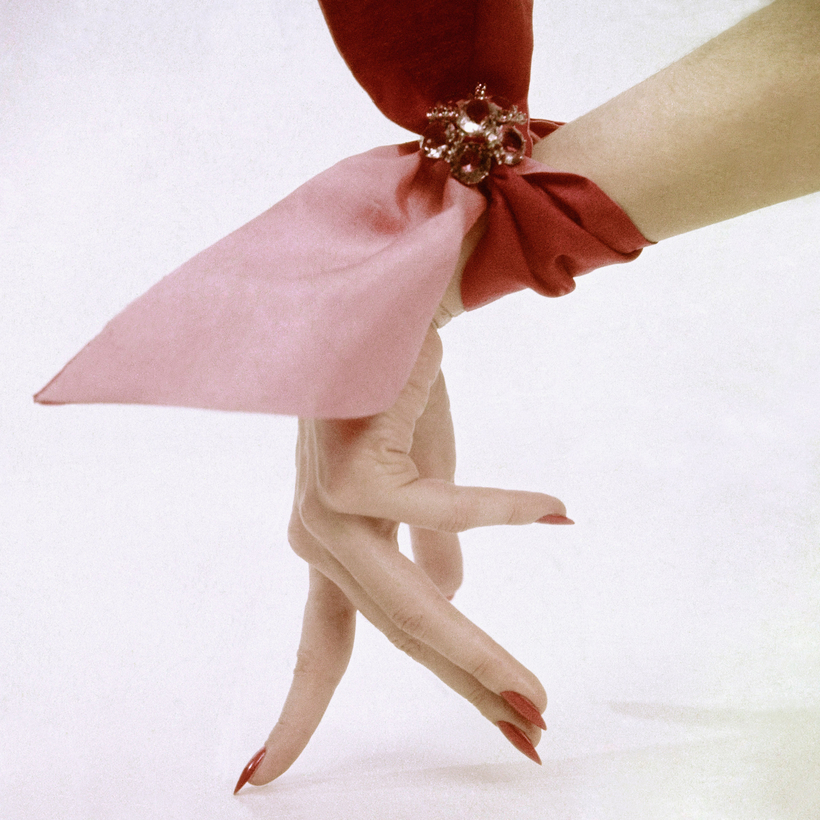In the United States, there’s a minor Russian invasion afoot—or perhaps it’s more accurate to say “at hand.” The “Russian manicure,” as the beauty trend is known, hasn’t made its inevitable crossover from niche to mainstream quite yet. But is it due to the drilling involved or the illicit-sounding nature of just about anything branded “Russian” these days? In this case, it may be both.
The process requires a dental-grade electronic file (e-file) or drill to shave off the extra bit of cuticle between the skin and the nail bed and bump up the cuticle so that polish can be applied underneath it. The result is purported to be a cleaner, longer-lasting manicure, with nails that—for a short while, at least—seem to miraculously grow out already shellacked.
“We just call them ‘manicures’ back home,” says Gulnara Medvedeva, a Moscow-born co-owner of Mansion Beauty European Nail Studio on Manhattan’s Upper East Side. Medvedeva and her colleagues offer only this particular procedure, which they refer to as a “European manicure.”

Nonetheless, “Russian manicure” persists as the common nomenclature, especially on TikTok, where all nascent beauty trends live out their 15 minutes of fame. In Hollywood, personalities such as Zendaya, Hailey Bieber, Miranda Kerr, Kevin and Eniko Hart, and Kate Moss were early adopters, seeking appointments with Russian nail guru Lisa Kon.
From start to finish, a Russian manicure can take up to two hours. Combined with a pedicure, the procedures will require the better part of an afternoon; customers might consider downloading a favorite Tolstoy novel on audiobook to keep themselves entertained.
But time isn’t an issue for everyone. “I have two young children, and I love having two hours of not needing to attend to anyone,” says Frenchie Ferenczi, a marketing-and-growth strategist who lives in Brooklyn and makes regular pilgrimages to Mansion Beauty every three weeks or so. “It’s my new secret obsession.” Cost is a consideration, too; a Russian manicure runs about $80 to $87. (Kon’s prices, meanwhile, start at $300.)
From start to finish, a Russian manicure can take up to two hours.
Indeed, there’s a glamorously indulgent, almost deliriously romantic appeal to the drawn-out treatments, yet Medvedeva points out that since these manicures last up to three or four weeks, it’s actually quite efficient. And because the e-files are used to remove any existing polish on the nails, versus soaking them in dehydrating acetone, which can damage the nail plate, nails supposedly grow out stronger and healthier.
But dermatologists and podiatrists remain skeptical. “There’s a high risk of damaging healthy skin,” says Manhattan-based dermatologist Michele Green, referring to the the fast-spinning e-files. When the skin’s protective barrier is compromised, Green explains, “microbes like bacteria and fungi can enter the body.”
Nail fungus may not be the sexiest conversation topic at the holiday party, so proceed with caution. “Sterilization, clean equipment and gloves—highly important!” says Kon. At Mansion Beauty, where the majority of staff have more than five years of experience, Medvedeva claims they rely on a three-step sterilization process.
Even with those red flags, and especially given ongoing global affairs, this variety of manicure might be the least controversial Russian import one can indulge in this season. But those who prefer to err on the side of caution might want to refer to it as “European.”
Laura Neilson is a New York–based writer and a regular contributor to The New York Times and The Wall Street Journal


